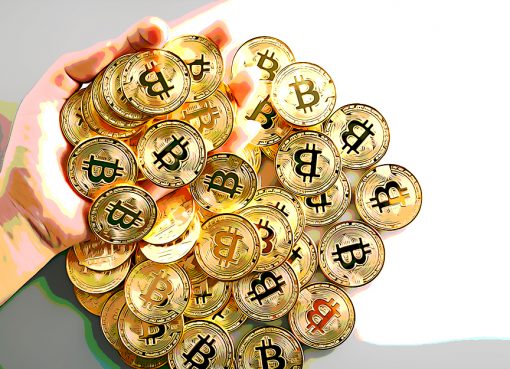By doing so, they have helped regular people become known celebrities, many of whom now hold more influence than TV networks and print media outlets. The same can be said for music streaming services like Spotify and iTunes, which now allow musicians to skip record label deals and simply upload their songs directly to platforms through services like DistroKid and others.
While these are amazing feats, to say the least, the model still needs to be improved. According to Jack Cheng, co-founder of GazeTV — a blockchain-based social entertainment platform:
“Content creators don’t have many choices until they are famous or have a large following, and even then they can get deplatformed pretty easily. If you think back to the early days of YouTube, the platform did not make money. These days the platform makes money as part of a great data generating engine.”
The top content platforms keep aspiring creators in the dark when it comes to their compensation policies, which leads to frequent video demonetizations and has also led to many creators having their videos removed or being shadowbanned. Some have seen their channels completely deleted or entirely demonetized with no prior warning.
Cheng believes that blockchain technology can help change this while providing better monetization for content creators, telling Cryptox: “Having a transparent place for content creators which allows viewers to reward the creators themselves is imperative.”
What exactly is going on?
While creators have a hard time monetizing their content — facing multiple strict rules, frequent demonetizations and generally low revenues — advertising networks are still making millions of dollars by showing ads and collecting users’ data. That data is then, unknowingly and often unwillingly, shared with other third parties to further advertising retargeting. All of this is done without a single reward being shared with the creators of all this value: the content consumer.
Creators are eager to change this. It is already happening with many other industries such as financial services, which has been disrupted by the emergence of decentralized finance, or DeFi. Now, blockchain technology may finally make an impact upon the world of entertainment and bring advertisers and creators closer together, removing the middlemen and allowing all involved parties to be properly compensated. EllioTrades, a crypto YouTuber and co-creator of the Superfarm NFT project, told Cryptox:
“Engagement is what matters and the reality is that YouTube and Twitter have unrivaled reach. Until a challenger can adequately provide the tools for creators to build their own brands, there isn’t much alternative to these incumbents. Almost every content creator knows this, so despite occasional censorship on these platforms creators remain steadfast in growing their channels there.”
Incentives through blockchain technology
Several platforms aim to solve the ambiguous monetization policies of various entertainment platforms by leveraging incentives and rewards, empowering creators and audiences to engage with each other and form a community.
For example, on GazeTV, users can support creators with ERC-20 GAZE tokens, based on their preferences and tastes, that can be earned, staked and exchanged. This way, creators can track on the blockchain exactly how they are being compensated. This provides creators with additional options to earn from their content. Cheng told Cryptox: “I don’t think it’s a binary choice. You don’t have to leave other platforms, such as YouTube, to be on GazeTV.”
Other such platforms include You42 and AIOZTube, the flagship decentralized application, or DApp, on Aioz Network. These platforms aim to create new ways for content creators to be rewarded fairly, while bringing improvements in other areas like data privacy and ad fraud.
The system is broken?
While it’s easy to simply point fingers at “greedy” corporations such as Spotify or YouTube, it’s important to have a holistic view of all the issues associated with providing audio and video streaming services like the aforementioned ones. Platforms like these seem simple in the eye of the regular user, but they are highly complicated and expensive to operate.
So far, these services have been run on cloud-based servers, which are expensive and can cause problems when it comes to the actual delivery of the content. Issues like slow streaming speeds and low-quality video and frametimes, among others, still plague these services — and blockchain technology cannot solve this completely.
Yes, at its best, blockchain technology can increase incentives by allowing advertisers and creators to interact directly and can remove ad networks as the middleman, but the content delivery issue still remains. Centralized services have their limits, and the few companies that own the servers will always be rewarded.
Blockchain as a game changer?
This is where peer-to-peer content delivery systems come into play. Platforms like Theta and Aioz Network are leveraging both blockchain and P2P file sharing systems to create a fully decentralized system that will allow for the creation of potentially paradigm-shifting DApps. This new system will also allow existing services like YouTube, Netflix and others to easily port from expensive centralized servers to decentralized node services.
So, how does it work? Such projects combine blockchain technology and P2P file sharing in a simple way where the P2P systems take care of content delivery. However, this is not new, as projects like BitTorrent have been around for many years. The key change is the use of blockchain technology to properly reward nodes for their work.
As such, nodes serve the primary function of storing and distributing content — performing compute-intensive tasks that require bandwidth, storage and power to deliver content. Erman Tjiputra, CEO and founder of Aioz Network, told Cryptox:
“AIOZ Network, a Layer-1 Blockchain-Based Content Delivery Network, incentivizes edge nodes with $AIOZ to share compute resources and internet bandwidth with the security, transparency and accountability of Blockchain. AIOZ Network empowers dApps to have greater streaming quality for viewers via p2p streaming technique and instant cost savings over traditional CDNs.”
The road ahead, DeFi and NFTs
Blockchain technology allows for decentralized monetization to create fairer, more transparent reward systems for creators and also allows advertisers to save millions by cutting out advertising networks. Attention and data can now be negotiated directly with the content consumer, and this can be rewarded for providing it willingly.
It doesn’t end there, however. Nonfungible tokens are the latest craze in the crypto world, and they may hold the key to additional monetization and community-led control for content creators. To put it shortly, NFTs may allow creators to tokenize themselves and allow the community to have a say on how content should be handled.
The internet has opened up doors for entirely new forms of content to emerge, from vlogs to vines, deepfakes, prank videos and much more. Content that is now seen as commonplace and taken for granted was simply impossible a few years ago. Video sharing platforms like YouTube and streaming services like Twitch have changed the game for content creation in an immeasurable way.




